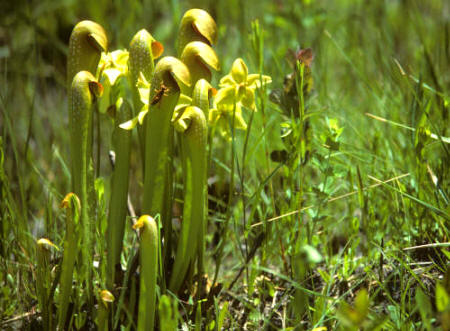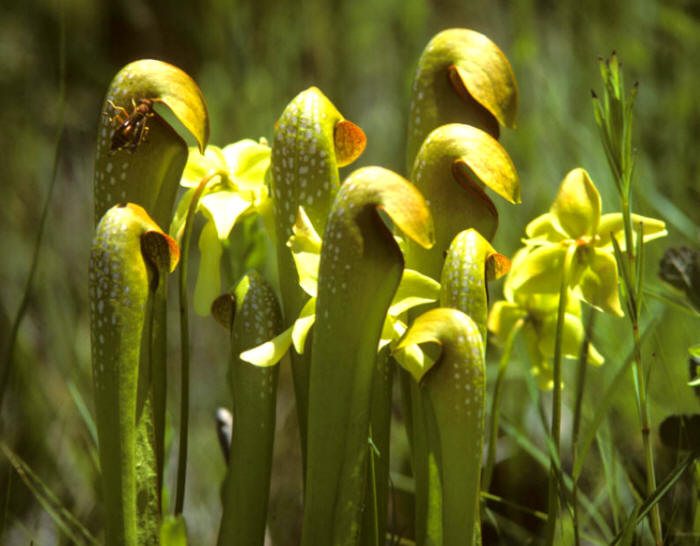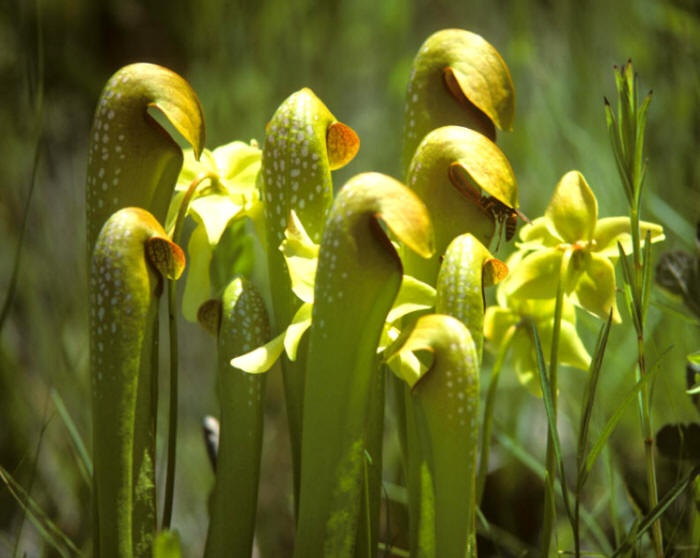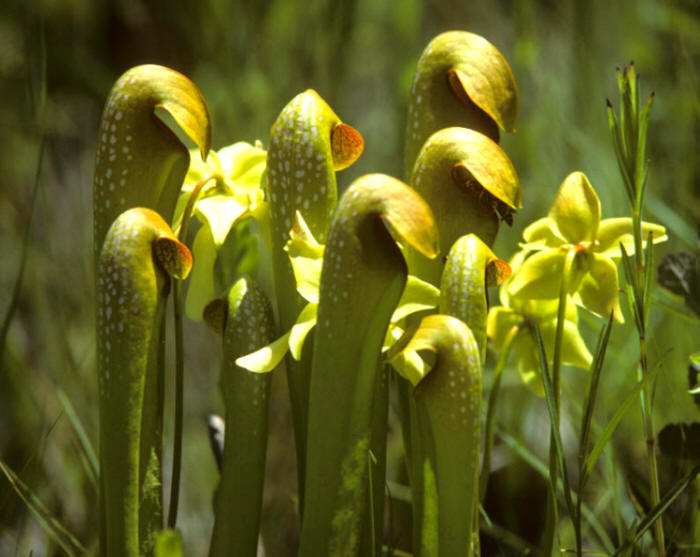| Pitcher
Plants
Sarracenia
|
Sarracenia minor
©
2009 Makoto Honda. All Rights Reserved




One of the
frequent visitors to this hooded pitcher plant is the bee, moving from one
pitcher to another in search of nectar secretions. In pitcher
plants in general, a field observation shows that many insect visitors
to the pitcher do leave the plant without being caught. This leads
to the notion that the pitcher plants provide nectar for a certain
insect community in a mutually beneficial way, thus forming
"mutualism" -- The insect community receives nectar from the
pitcher plants in exchange for a small portion of the community being
sacrificed as prey.